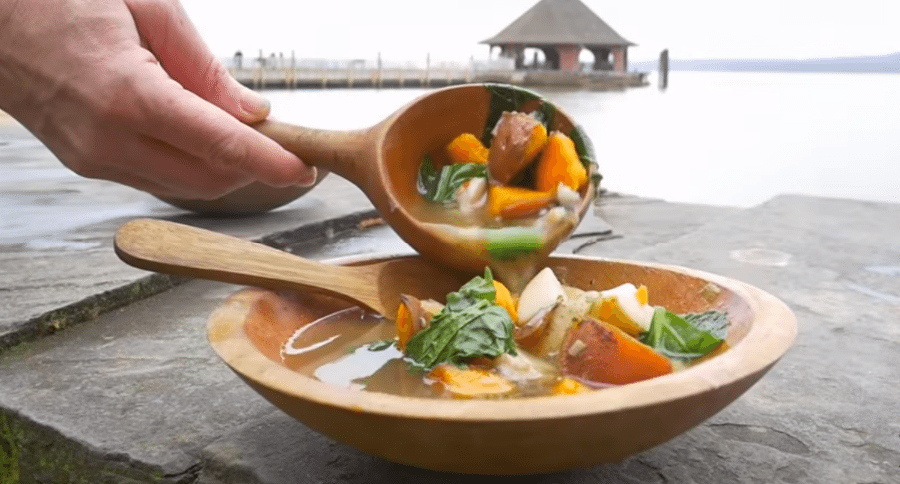Here's the recipe for a catfish stew that was prepared at George Washington's Mount Vernon for the workers and slaves on the entire estate.
Jon Townsend visits George Washington's home at Mount Vernon and continues to explore the historic fishing season on the Potomac River. We already know that planked shad over an open fire was one of the staples during the season on the estate, and here's another: catfish stew.
While catching the shad in their nets, the workers and slaves that lived at Mount Vernon also caught incidental catfish in the same nets. These fish were a great supplement to their shad diet at this time of year.
Deb Colburn, the Interpretive Program Supervisor for Historic Trades at Mount Vernon, indicates that it's interesting to note that the slaves tended to use a good deal of hot, spicy peppers in their cooking.
I think it's also noteworthy that fatback was the fat that was primarily used by the slaves, which gives some insight into the importance and prevalence of hogs on the plantation.
These ingredients, along with the spiced and chunked catfish, root vegetables, spring onions and leafy greens were all cooked in kettles over open fires, which also no doubt lent a nice smoky aroma to the dish.
It's an exceedingly simple recipe, and a quick one from start to finish, as would be practical when feeding large number of people. It's also one that seems perfect for your camp kitchen or even home cooking.
These historic recipes are loads of fun, in both educational and historic value, as well as in practical eating value. Give this recipe a try next time you catch a catfish, and relive a little bit of 18th century history.
Like what you see here? You can read more great articles by David Smith at his facebook page, Stumpjack Outdoors.
NEXT: Here's How Early American Whiskey Was Made on the Homestead
WATCH




